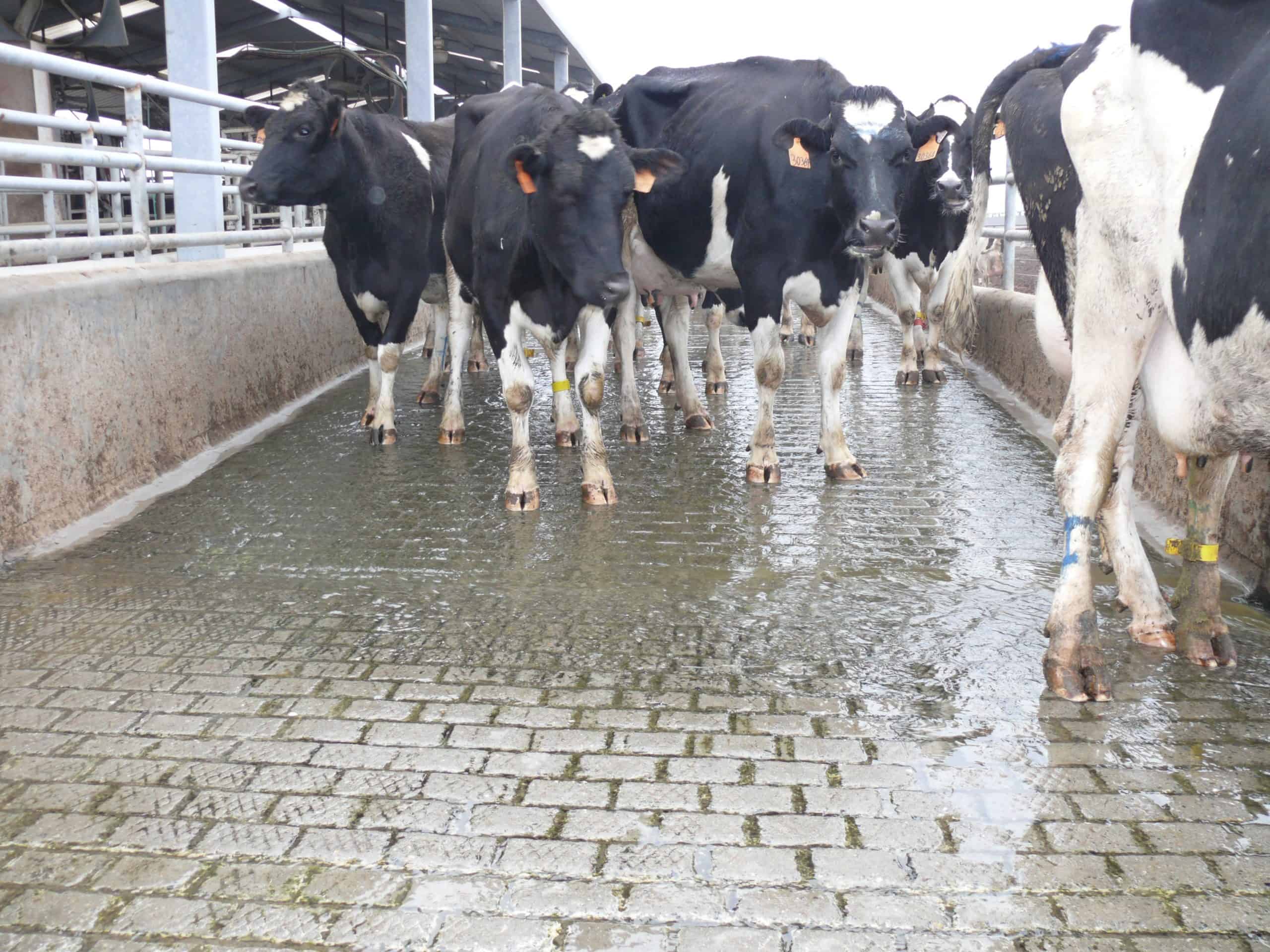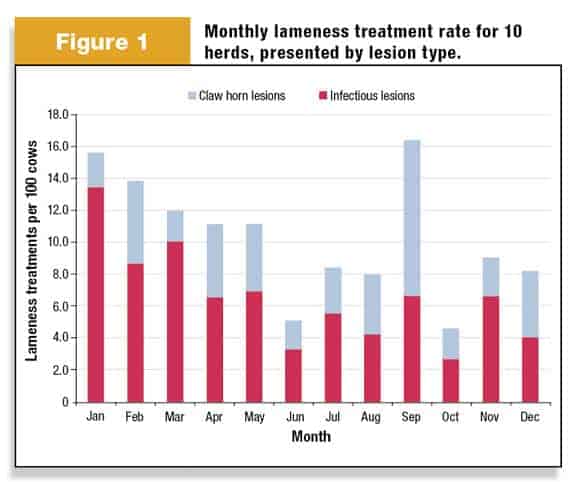
Winter is an important time to keep hoof care health in mind. Footbath schedules and treatments may alter due to freezing temperatures. Although many anti-microbials may not be active during the winter months, hairy heel wart bacteria remain effective throughout the year.
Research done by Dr. Nigel Cook shows that January through March are when infectious lesions that lead to lameness are most active (see graph below). Dr. Cook examined 10 Wisconsin dairy farms over a one-year period to collect this data. “Cold weather during the late winter may lead to manure handling problems in the alleys and reduced frequency of the foot-bathing, triggering an elevation in the rate of new [digital dermatitis] infections,” says Dr. Cook.

Source: Progressive Dairyman
In freezing temperatures, footbath additives can become less effective. Formaldehyde loses its effectiveness below 45 degrees. HealMax Footbath Concentrate uses no heavy metals or formaldehyde to stay effective in cooler temperatures.
As an alternative to footbaths, farmers may consider using topical treatments in the milking parlor. HealMax Spray or Foam can be applied during milkings to slow down the progression of hairy heel warts.
For more information about cold-weather hoof care, contact your hoof trimmer or veterinarian today.